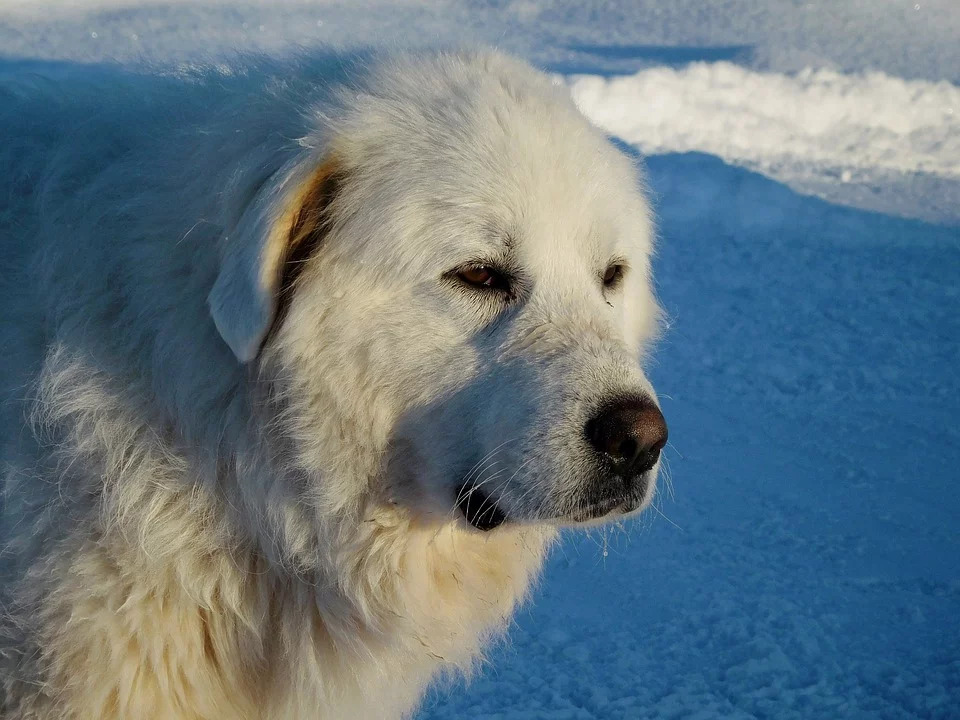The Great Pyrenees
Vital Stats of Great Pyrenees

- Dog breed group: Working
- Height: 25 to 32 inches at the shoulder
- Weight: 85 to 115 pounds
- Lifespan: 10 to 12 years
Physical Characteristics of Great Pyrenees
The Great Pyrenees was bred to safeguard flocks in steep, mountainous regions, so he has a great combination of strength and agility. This majestic, imposing and elegant breed is a medium-built large dog and slightly long.
The thick coat of the Great Pyrenees makes one believe that the dog is heavy-boned. This double coat is weather resistant and comprises a woolly and dense undercoat and a white flat, coarse, and longer outer coat. With smooth movements, the breed has a dog drive and reach. He also has a contemplative and elegant expression.
Care for Great Pyrenees

While the Great Pyrenees can survive outdoors in cold and temperate weather, he also enjoys living indoors with his family. This breed is not ideal for hot weather, and requires daily exercise to remain fit. However, his needs are moderate and a walk is good enough.
The dog is fond of hiking, mainly in snow and cold weather. At times, he can drool and is also a messy drinker. It’s necessary to occasionally brush his coat weekly, but daily brushing during the time of shedding.
Health of Great Pyrenees
Similar to any other breed, the Great Pyrenees is prone to specific health problems. Minor health concerns that are common with the Great Pyrenees include the following:
- entropion
- osteosarcoma
- Osteochondrosis Dissecans (OCD)
- skin problems
- cataract
- chondrodyspasia
- panosteitis
This breed is also prone to serious problems such as canine hip dysplasia (CHD) and patellar luxation. Sometimes the Great Pyrenees can be susceptible to spinal muscular atrophy, gastric torsion and otitis externa. To identify some of these issues, your veterinarian at All Pets may recommend regular hip, knee and eye exams for your dog.
History of Great Pyrenees

The Great Pyrenees originated as a flock-guarding dog in the Pyrenees Mountains of France. Working in partnership with the shepherd and the smaller Pyrenean Shepherd, this breed watched over flocks and provided protection from predators such as wolves and bears.
Dogs such as the Great Pyrenees descend from ancient mastiff-type dogs. The white coat of this breed allows them to blend in with the sheep they protect, which is ideal to catch a predator by surprise. They wore heavy iron collars with spikes for protection.
Farmed for their bravery, the dogs were drafted as guardians for chateaus. One of the earliest mentions of this breed was in 1407 by a historian named Bourdet, who wrote that they guarded the chateau at Lourdes, which was located in the Pyrenean region of southwest France. Later, King Louis XIV became a great admirer of the breed. He made them part of his household guard.
The first Great Pyrenees came to the U.S. with the young country’s great friend the Marquis de Lafeayette, who was also a noted dog fancier. However, it was not until more than a century later that the dogs were recognized by the American Kennel Club in 1933.
For more information on the Great Pyrenees or other dog breeds, don’t hesitate to contact us here at All Pets Veterinary Medical Center with the link below!
















